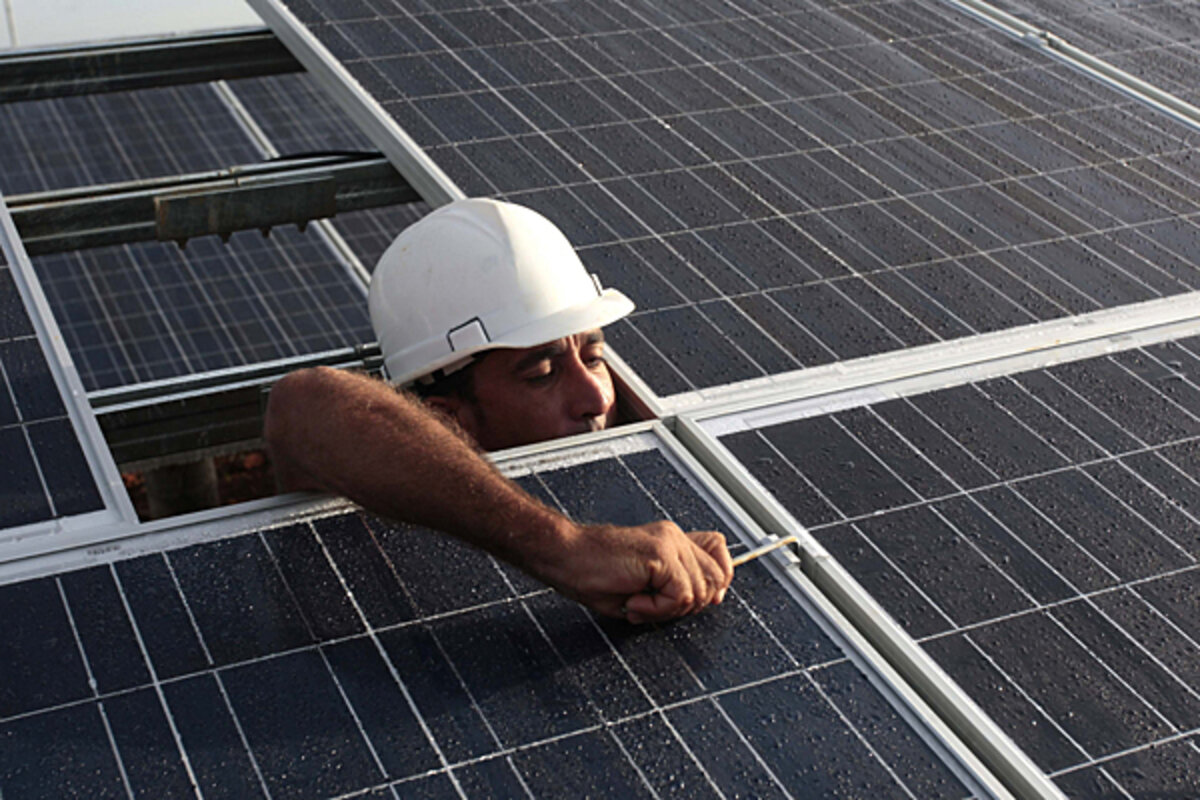Top 10 reasons 2013 was a good year for clean energy
Loading...
2013 was an exciting and inspiring year in many regards. And we’re not just talking the arrival of Prince George or the fact that the new Pope rides an . There were many remarkable clean energy developments that are helping to bring us closer to a clean, prosperous, and secure energy future. Here we list our top ten:
1. Renewables become cheapest option for many utilities
Multiple U.S. utilities added renewable energy to their mix in 2013, because it’s the cheapest option, with no state renewable portfolio standard (RPS) requirement calculated in. For example, ����Ǿ��Ա�� Alabama power in buying wind energy from Oklahoma, and Xcel of Colorado filed a petition to the public utility commission stating that utility-scale solar is its cheapest peaking option. Xcel now plans to the amount of utility-scale solar it generates. (At the beginning of this year, a that solar power offers Xcel ratepayers a better deal than natural gas.)
2. Utilities look toward new business models
One of Europe’s largest utilities, RWE, it is shedding its old business model and transforming itself into a renewable energy service provider. Their so-called “prosumer” business strategy states, “Based on funds sourced largely from third parties, we will position ourselves as a project enabler, operator and system integrator of renewables.” Other utilities are also taking distributed renewables and business model transformation seriously as indicated by the oft-referenced s paper by Peter Kind of the Edison Electric Institute (������).��
3. Storage goes mainstream
California passed an (AB 2514), a first-of-its-kind legislation that will give a significant push to the non-EV storage market in the U.S. Maryland also joined the storage craze by installing its . And solar PV companies are adding storage to their offerings. STEM, Green Charge Networks, and Solar Grid Storage all came into the spotlight with solutions that offer distributed battery energy storage to commercial customers, while SolarCity (with Tesla) and NRG’s offerings incorporate batteries for residential systems.
4. Electric vehicles have banner year
Worldwide EV car sales were up from 2012, while in Norway electric cars were the cars two months in a row. Tesla stocks surged as the Tesla Model S received a rare near-perfect score from , and Motor Trend named it Car of the Year—a first for an electric car. And EVs became more affordable as automakers slashed prices for plug-in hybrid and electric vehicles such as the plug-in Prius, Chevy Volt, and Ford Focus.
5. Transportation apps are on the rise
2013 saw an explosion of transportation-related apps. From real-time bus tracking to apps like Ridescout that display all your options to get from point A to point B, these apps are helping us . Further decreasing our time spent in cars was the huge increase in programs around the world.
6. Cities get serious about building efficiency
Chicago, Boston, and Minneapolis ��Ǿ��Ա���� in enacting laws and policies requiring benchmarking and disclosure for energy use for large buildings. Benchmarking—measuring a building’s energy use and comparing it to the average for similar buildings—is often the crucial first step toward improving a building’s efficiency. The cities and states requiring benchmarking represent almost 5 billion square feet of floor space in major real estate markets.
7. Deep energy retrofits are the new black
—a whole-building analysis and construction process that achieves much larger energy cost savings than those of simpler energy retrofits—became a hot topic in 2013. The General Services Administration (GSA), the nation’s largest public real estate organization managing more than 7,000 properties that provide workspace for some 1.2 million federal employees, performed deep energy retrofits on 30 buildings in 2013, more than it has executed in the last ten years combined. RMI also worked with AT&T, the Department of Defense’s Exchange, Arizona State University, Wal-Mart, Kaiser Permanente, Kroger, and others on deep energy retrofits.
8. China tackles air pollution
Following another year of show-stopping peak pollution events, China has redoubled its efforts to focus on environmental issues stemming from breakneck growth and development. In 2013 China unveiled a to combat air pollution, including prohibiting the approval of new coal-fired power plants in three key industrial areas, implementing coal reduction and substitution projects, and increasing the use of renewable sources of energy. Nissan also announced it will open a in China through the Nissan-Dongfeng joint venture, reducing the EV’s price in China drastically. And Beijing announced plans to ensure of all new cars on the city's roads are “new energy” vehicles—EVs and PHEVs—in order to alleviate the crippling pollution in the city.
9. Companies put a price on carbon
Some of the biggest public companies in the U.S., including most of the large oil companies, are setting an internal price on their , with prices ranging from $6 to $60 per metric ton. From Walt Disney Company to Delta Air Lines to ConAgra Foods, companies are preparing for the possibility that someday they may face carbon taxes or regulations. A recent report by CDP lists 27 companies and two foreign businesses that have put a price on carbon.
10. Industry gets efficient
�ճ���� Program, a national initiative that challenges industry to meet ambitious energy-savings targets, now has 123 partner companies representing 1,750 plants. These companies have agreed to reduce the energy intensity of their industrial operations by 25 percent or more within 10 years. Companies involved include GE, 3M, Ford Motor Company, and Johnson Controls.
Bonus: TV-watching gets efficient
Companies in the pay-TV industry, partnering with energy efficiency advocacy groups, announced they will of set-top boxes by 10 to 45 percent. This will save consumers a predicted $1 billion dollars, save three power plants worth of electricity, and keep 5 million metric tons of carbon pollution out of the air each year. Further, the 90 million pay-TV subscribers in the U.S. will be able to easily find out how much electricity their set-top box uses and will have a wide range of more efficient models to choose from.




